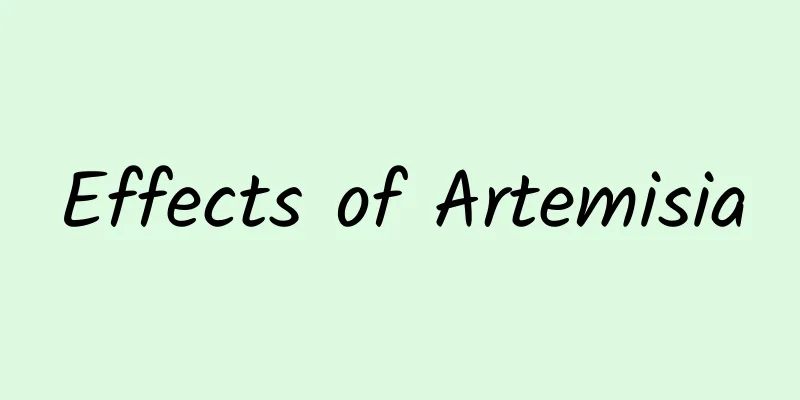Effects of Artemisia

|
When most people encounter illness themselves or their family members, their first reaction is to go to the hospital for examination and treatment. It is actually a good idea to have this thought, because it can help themselves or their family members recover health sooner and return to normal life sooner. But in reality, there are often situations like this: your geographical location means you cannot go to the hospital when you are sick, or there is no hospital nearby. What should we do at this time? In fact, the situation mentioned above will still happen. When we are in this situation, if we know the functions of some plants around us, it will be of great help to us, because there are often some medicinal herbs in the environment around us, such as: mugwort. Let’s introduce the effects of Artemisia argyi in detail below. Artemisia argyi alias: mugwort, wormwood leaf, mugwort, and domestic wormwood. It belongs to the genus Artemisia of the Asteraceae family, and its scientific name is Aremisia argyi. Morphological characteristics: Perennial herb with many branched underground rhizomes. The plant is 45 to 120 cm tall, with an erect, rounded and ribbed stem covered with grayish-white soft hairs. The stem branches from the middle and above, and the leaves on the lower part of the stem wither when flowering; the middle leaves are irregularly alternate and have short petioles; the leaf blades are ovate-elliptic and deeply pinnate, with the basal lobes often forming pseudostipules, which are elliptic to lanceolate with coarse serrations on the edges, dark green with sparse white soft hairs on the front, and gray-green with gray villi on the back; the upper leaves are sessile, the apical leaves are entire, the flowers are lanceolate or strip-lanceolate, the inflorescence is capitulate, sessile, most of them are densely packed into racemes, and the involucre is densely covered with white cotton hairs; the side flowers are female flowers, 7 to 12 in number, often underdeveloped, with thin and weak corollas; the central flowers are bisexual, 10 to 12 in number. The flower colors vary depending on the variety, including red, light yellow or light brown. Achenes oblong, hairy or glabrous. Artemisia is mainly distributed in eastern Asia, such as the Korean Peninsula, Japan, and Mongolia. It is distributed in Northeast, North my country, East China, Southwest China, Shaanxi and Gansu. It has strong adaptability and commonly grows in roadside wilderness and grasslands. It can grow anywhere with good drainage and sunshine, but it grows better in moist and fertile soil. Artemisia has a great role in pharmacology: Artemisia is closely related to the life of the Chinese people. During the Dragon Boat Festival, people always place mugwort at home to "ward off evil spirits". After the stalks die, the plant body is soaked in water and fumigated to achieve the purpose of disinfection and itching relief. Postpartum women often use mugwort water for bathing or fumigation. Traditional medicinal theory believes that mugwort has the effects of regulating qi and blood, expelling cold and dampness, warming the meridians, stopping bleeding, and calming the fetus. Modern experimental research has shown that mugwort has antibacterial and antiviral effects; antiasthmatic, antitussive and expectorant effects; hemostatic and anticoagulant effects; sedative and anti-allergic effects; liver protecting and choleretic effects, etc. Mugwort can be used to make recipes such as "mugwort tea", "mugwort soup", and "mugwort porridge" to enhance the body's resistance to disease. Through understanding the above content, when we encounter illness in life and cannot go to the hospital in the future, we can look around to see if we can find Artemisia annua, because it can not only kill bacteria and disinfect, but also stop bleeding and anti-allergic, so it still has a certain therapeutic effect on common diseases. Of course, if the disease is out of control, the patient should be sent to the nearest hospital for treatment in time. |
Recommend
Why is Coke considered a happy drink but Sprite is not?
Audit expert: Peng Guoqiu Deputy Chief Physician,...
Who is jumping around on the beach? Of course, it’s the “Bouncing Prince” of the fish world.
Mudskippers, also known as jumping fish and loach...
How do these nearsighted shooting champions hit the bull's eye?
Column design: 91 Author of this issue: Guo Yiche...
The efficacy and function of stone ginseng
Traditional Chinese medicine often has unexpected...
The efficacy of Acanthopanax senticosus
What are the effects of Acanthopanax senticosus? ...
Breaking news: A moving hairline does not necessarily mean hair loss!
"When you are young, you don't know how ...
The versatile "Lynx Car" can be equipped with various weapons and can also be transformed into an ultra-light all-terrain cooking vehicle
As a country known for its delicious food, my cou...
Are crazy yellow ants so "crazy" because they have two sets of DNA?
There is a kind of yellow ant that makes some irr...
The efficacy and function of swollen foot fern
Swelling foot fern is a kind of traditional Chine...
The efficacy and function of tobacco glue
Tobacco gum is a very common Chinese medicine. Al...
Be careful when canceling your mobile phone number! Operators remind users to pay attention to these details
With the rapid development of communication techn...
Quantum peak showdown: Einstein still didn’t understand this time!
Produced by: Science Popularization China Author:...
What are the effects of white Polygonum multiflorum
The effects of white Polygonum multiflorum are di...
The efficacy and function of mountain peony
Euphrasia officinalis is a medicinal material tha...
The efficacy and function of sesame flower
Many people are not very clear about the effects ...









